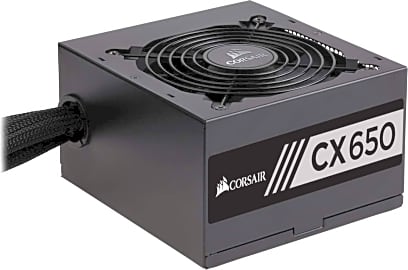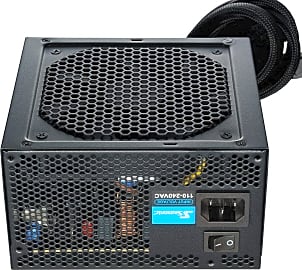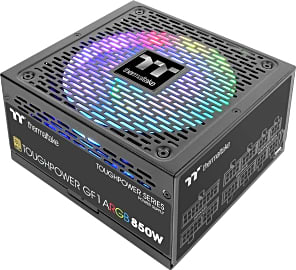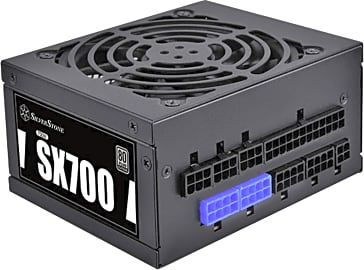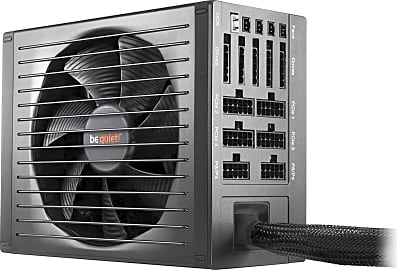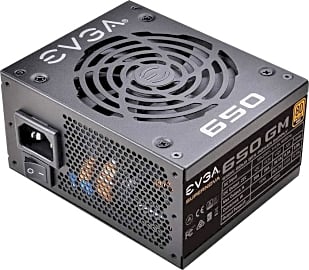The 8 Best Gaming PSUs

This wiki has been updated 39 times since it was first published in March of 2016. Few components draw as much electricity from a system as today's high-end graphics cards. So it's important to build a computer around a power supply that will enable a card to process gigabytes of data per second. Because the PSU is critical to both the performance and health of a PC, it's important to find specific models that are inspected for high-quality components and refined topologies. When users buy our independently chosen editorial picks, we may earn commissions to help fund the Wiki.
Editor's Notes
December 30, 2020:
Power supplies are a difficult field to navigate. A single company will generally sell several lines at once, but what they don't tell you is that they're all made with different components and topologies, and usually come from completely different factories. One particular brand could have a line that performs reliably, while an adjacent product that looks similar could have a surprisingly high failure rate. To that end, we consulted with some dedicated PC electricians to figure out what's really going on.
To put it simply, it's almost impossible to beat the Be Quiet! Dark Power Pro 11 and Be Quiet! Straight Power 11. In fact, everything from Be Quiet! is considered high quality, and that kind of reputation is beyond rare in the world of PSUs. They're expensive, though.
If you need something more affordable, check out the Corsair CX, Seasonic S12III, and Cooler Master MasterWatt. You will, with some of them, make sacrifices in terms of watts and modular cables, but the design and components inside are of verifiably high quality.
March 20, 2019:
The power supply is arguably the most important component in any gaming system, and if you skimp out on it, you're likely to endanger the rest of your high-dollar build. So it's incredibly important to select a reliable one. With that said, different models within each distributor's lineup can differ considerably, even more so than with most other components. The reason for this is that almost no producers manufacture their own specific PSUs; at best, the more popular brands are in control of specifications and OEM manufacturers, and at worst, the cheapest and least well-known brands may outsource the entire process, which can leave users very much in the dark as to a unit's actual reliability, which is, to put it bluntly, dangerous. You may have heard of Corsair before, as they're a high-volume producer of a range of high-quality goods, and many of their PSUs are similarly respectable. Their RMX line has been taken apart and reviewed to great extent, and experts agree that it's a very good choice. Similarly, its closely related White variant is also great, and it's engineered to be a bit quieter. The AXI line is fantastic for those with impressive RGB setups, or dedicated overclockers, because not only is it a high-capacity unit, its digital controls provide it with exceptional versatility and safety. For specialty builds, their SFX (for "small form factor") model is renowned. SeaSonic is one of the only companies in North America to sell their own manufactured products, and the AirTouch is their newest release. If you're on a budget, Cooler Master's MWE is a great choice, as is the EVGA Supernova G1+. If you're not looking for an absolute rock-bottom price, the Be Quiet! is an exceptionally refined device, that was produced with plenty of R&D, and is also one of the least bothersome, as far as noise goes.
From Nerdy To Cool In Just A Few Years
It's a little bit like working on a car, in that attempting it without the proper experience or training can be an exercise in frustration and irreparable damage.
Video games over the last few decades have seen their fair share of highs and lows, but by now they've cemented their place in culture around the world. Since the early days of DOS, there's been a large contingent of proud and talented geeks, dorks, and various other eggheads devoted to playing the latest titles on the PC, and we've built our own gaming boxes since before some of us were interested in girls (thus ensuring that said girls would not soon be interested in us). For that matter, considering the stereotypically uncool origins of video games, it's at least a little ironic that eSports (21st-century lingo for professional video gaming) is now featured on such jock-friendly networks as ESPN. Gamers around the world wonder where this kind of coverage was when Diablo III came out. Well, sometimes life just isn't fair.
At any rate, tearing apart and/or constructing a desktop PC isn't exactly the simplest task. It's a little bit like working on a car, in that attempting it without the proper experience or training can be an exercise in frustration and irreparable damage. Actually, working on computers even further resembles working on cars due to all the skin it tends to scrape from your knuckles. But just like the complex automobile, the seemingly esoteric PC is in many ways just another machine — albeit a complicated one.
Transistor, Meet Electrons
Most new power supply units use what's called the ATX format. That acronym does actually belong mostly to a specific motherboard form factor, but it now also describes the PSU format that fits in the majority of new cases. So, while there's a good chance that your new PSU will work with most recent components, it is imperative to measure accurately and confirm that your new purchase will fit with your existing mainframe.
The most advanced chipsets aren't only smaller, but also more efficient than ever before.
It's up to journalists and consumers to test manufacturers' generally unregulated marketing claims. First of all, total wattage matters, but that's only the first step. Even the smallest of calculations creates waste heat, which is among the main obstacles to computing power. The most advanced chipsets aren't only smaller, but also more efficient than ever before. Less waste means a lower power drain, and lower temperatures mean longer lifespans and more stable operating conditions, both of which translate to higher performance and value.
Power supplies deliver electricity via three separate circuits, called rails, that operate at 3.3, 5, and 12 volts. The 12-volt rail is the most pertinent to the gaming realm, as that's where the GPU gets its juice. You'll want a minimum of 30 amps available on this rail, and likely more if you're running a late-model graphics card. Anyone using multiple mechanical drives, as well as fervent AMD aficionados, should pay close attention to the peak capabilities of that 12-volt supply.
The top GPUs have operated south of the 300-watt mark for several years — out of the box, that is. That figure is unlikely to jump significantly in the near future, but we may see a top-end increase when high-end cooling inevitably combines with overclocking to push 14- and 7-nanometer CMOS chipsets to their limits. If you're still working your way up to the latest NVidia release, it's probably wise to choose a PSU that promises to allow an upgrade to a newer card that may have more stringent power requirements.
The Deathmatch Is In The Details
PSUs consist of a power brick and a bundle of cables, and that's basically it. Initial research will uncover two main types: modular, and non-modular. The only difference between the two is that modular PSUs have entirely removable cables. This might not seem like a huge difference at first, but fewer extraneous wires taking up space in your case can help to increase airflow and keep heat-sensitive components safe. The main drawbacks to these clutter-reducing modular designs is that they're usually a bit more expensive, and the physical power brick tends to take up a little more room in the case, ostensibly to accommodate for the built-in removable plugs characteristic of the modular design.
On the other hand, the highest ratings are only obtainable through the use of high-quality equipment and precise manufacturing processes.
Barring a wildly revolutionary development, the leading GPU's wattage ceiling isn't likely to increase a whole lot in the near future — in fact, total requirements may, in the future, see a downward trend in some situations. But while electronics are faster, more efficient, and cooler than before, these new innovations are often much more expensive. New technology can only build upwards from so many breakthroughs, but the more a component costs, the more important it is to provide it with a safe and consistent diet of regulated electricity. The power supply is really the fundamental building block of any system, and if it's made with poor-quality materials or shoddy craftsmanship, it can cause intermittent and hard-to-diagnose performance and crashing issues, and it can even permanently disable your CPU, motherboard, or entire computer. Having your entire PC bricked is even more painful when you realize that spending a little extra money on a respected, well-regulated PSU could have saved your entire Ultra-HD gaming rig.
Efficiency ratings, in and of themselves, are nearly inconsequential to the home PC user, saving a negligible amount per month on electricity. On the other hand, the highest ratings are only obtainable through the use of high-quality equipment and precise manufacturing processes. If you study closely, you'll also find that some of the units most popular among devoted gamers have essentially commercial-level voltage regulators on all three rails, ensuring maximum reliability and long lifespans, even when overclocked.
So, you can see that it's a topic worth exploring. The right power supply will keep you running smoothly for years to come, until you've exhausted your entire library of playable games and are forced to upgrade your PC. And if you make the right choice, you'll likely be able to transfer it to your new box.



